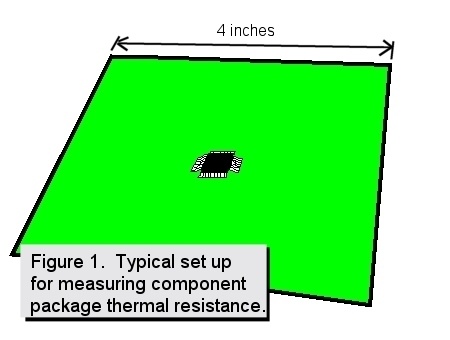|
answers to those doggone thermal design questions
by tony kordyban
dear mr. cooling smart-guy,
is being a thermal engineer in the electronics business a good career? i am in my junior year of engineering. i wanted to go with one of those dot-com outfits, but lately my e-mails just bounce back. i'm looking for high pay, stock options, and not too many hours, and also a fast internet link for downloading music at the office. what you do doesn't look too hard. do you need to know anything to pick heat sinks out of a catalog?
buzz by berkeley
dear buzz,
good thing you have one more year of school. you still have a couple things to learn.
a thermal engineer in electronics cooling needs some technical background - heat transfer, mechanical design, science of materials, and some laboratory skills. but probably just as important are communication skills, because half your job will be convincing marketing folks, digital circuit designers, and your own manager, that what you do is important.
being a thermal engineer in an electronics company is like being a chaplain in the army. you are outnumbered a thousand to one, and everybody thinks that because you don't carry a (soldering) gun, you don't do a real job. they don't listen to your sermons on sunday, but when they find themselves on the brink of disaster, they run to you for salvation. i love it, but it's not for everybody.
dear monsieur know-it-all,
these, as you say, doggone smt (surface mount) components have shrunk so much that i cannot even consider putting a heat sink on them anymore. is it possible to use the copper traces in the pcb (printed circuit board) as a heat sink? if so, how would i estimate the heat sink capability of the pcb, assuming that i know the pattern of copper traces and the thermal resistance of the component package?
regards,
quizzical in quebec
dear quiz,
the answer is yes and no. yes, the pcb can act as a heat sink, and no, you won't be able to estimate how well it will work, using the package thermal resistance as a starting point. if you take a look at my december 2000 column (stored somewhere in the coolingzone archives), there is a lovely drawing of a component on a pcb, with arrows showing heat spreading through the leads and into the board.
you face four problems here to getting a simple answer to your question:
- i never give a simple answer. sorry, just my nature.
- i assume the thermal resistance you are referring to is either theta j-a (resistance between the junction and ambient) or theta j-c (resistance between the junction and the case. by their very definition, they already include the heat sinking effect of a pcb in them. unfortunately, it is probably nothing like the pcb you want to use. here is how thermal resistance is measured, according to the jedec standard. your component is mounted on a standard test board, about 4 inches square, as shown in figure 1.

the test board has copper traces on both sides, so it conducts heat away from the component. the pcb gives off heat to the surrounding air, plus it radiates to the walls of the test chamber, so it acts as a heat sink with from 10 to 100 times the surface area of the package alone. junction temperature (tj), case temperature (tc) and the ambient air temperature (ta) are measured, along with the electrical power (p) delivered to the part. thermal resistances are then calculated from: theta j-a = p/(tj -ta) theta j-c = p/(tj-tc)
although it never says this in the component data sheet, the thermal resistance is not for the package, but for the total assembly of the package soldered onto a large pcb. what do you think would happen to the official value of theta j-a if the test board was smaller? theta j-a would increase, because the surface area of the assembly is less, just as if you had decreased the size of its heat sink. how does that apply to your situation? most likely you are not designing a board with all the components 8 inches apart from each other in every direction. my guess is that your parts are packed so tightly that the leads nearly touch.
so how much of the pcb would you say is dedicated to the component you are interested in? much less than a 4 inch by 4 inch square, i bet. that means the theta j-a got off a data sheet is, at best, an understatement of the thermal resistance. just forget about theta j-a. for a real board, in a real system, it is as useful as a fireplace on the international space station.
- it is possible to calculate the conduction heat transfer within the pcb from a component. but not by hand. all you have to do is make a 3-d finite element model of the pcb, with all the copper traces and epoxy layers shown in complete detail. you will also need a finite element model of the component package, because, as i hinted in #2, you don't know its true thermal resistance. and maybe models of all the other parts on the board, too. if you are going to do all that, then you should have a computational fluid dynamics model of the air flow over both sides of the board, too. once you have that, who cares about theta j-a. you are going to solve for the entire temperature field and flow field around your board. you get all the component temperatures directly without having to estimate heat sinking capability. in fact, using a cfd modeling program like flotherm or icepak is the only rigorous way of solving a conjugate heat transfer problem like this. it's not simple, but it's not impossible. i do it every day as part of my job. most of the time i don't bother to model all the copper and epoxy separately. i just use the lumped value of 10 w/mk for the thermal conductivity of a typical pcb.
- let's say you don't care what the exact value of the conductivity of the pcb is. you decide to cram as much copper around your device as you can to maximize the heat spreading. you will now be at odds with the poor folks who solder the parts on your pcb. they hate big copper planes near solder pads. during soldering, fat copper traces suck away the heat that is supposed to melt the solder to form the electrical joints. so you get a board with lots of opens, partially-formed, or intermittent solder joints. turning up the heat in the soldering machine to overcome this effect can damage the pcb or components. your manufacturing engineer will come around looking for "thermal relief," which is a phrase that has the opposite meaning thermal engineers expect. thermal relief means disconnecting the solder pads from the copper in the pcb as much as possible, using the thinnest possible traces that will carry the electric current. so if you insist on lots of copper around your part to get the heat out, you will end up causing soldering problems.
maybe i should sum up. heat does spread into the pcb from components, so the pcb can be considered a heat sink. you will never be able to estimate how good a heat sink the pcb can be with simple hand calculations. thermal resistance values already assume lots of heat spreading into the pcb, which may not be true, or even ethical. and lastly, if you add lots of copper, crossing your fingers that it will reduce temperature for your trouble-spot components, you may screw up the soldering process.
see what i mean about being pessimistic?
dear hot-shot,
the quality department insists we need a full-time thermal analyst for our engineering department. i'm stuck hiring one. what kind of minimum qualifications should i be looking for? i figure once this thermal panic dies down, i can switch him over to something productive, like mechanical drafting, or hi-pot testing in the factory. can a thermal analyst do both?
h. f. potter,
bedford falls
dear mr. potter,
you are wise not to jump into this thermal racket with both feet. my advice is to start small and work you way up. hire a college intern for the job and see how it works out. by the way, i have a resume from berkeley i am forwarding to you.

about tony kordyban
tony kordyban has been an engineer in the field of electronics cooling for different telecom and power supply companies (who can keep track when they change names so frequently?) for the last 20 years. maybe that doesn't make him an expert in heat transfer theory, but it has certainly gained him a lot of experience in the ways not to cool electronics.
he does have some book-learnin', with a b.s. in mechanical engineering from the university of detroit and a master’s in mechanical engineering from stanford. in those 20 years tony has come to the conclusion that a lot of the common practices of electronics cooling are full of baloney. he has run into so much nonsense in the field that he has found it easier to just assume "everything you know is wrong" (from the comedy album by firesign theatre), and to question everything against the basic principles of heat transfer theory.
tony has been collecting case studies of the wrong way to cool electronics, using them to educate the cooling masses, applying humor as the sugar to help the medicine go down. these have been published recently by the asme press in a book called, "hot air rises and heat sinks: everything you know about cooling electronics is wrong." it is available at https://www.amazon.com/hot-air-rises-heat-sinks/dp/0791800741. this advice column is an extension of that educational effort.
|